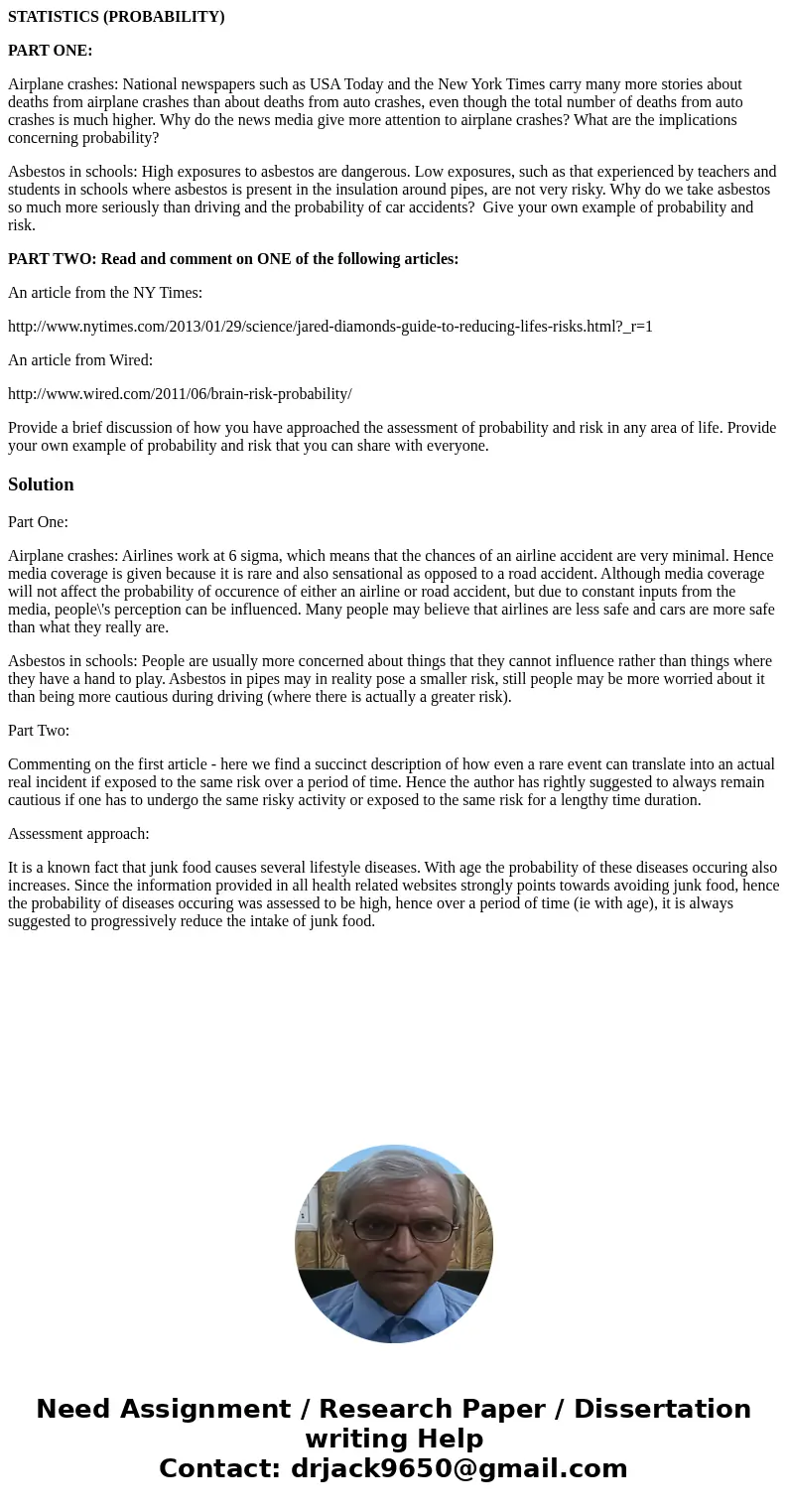STATISTICS PROBABILITY PART ONE Airplane crashes National ne
STATISTICS (PROBABILITY)
PART ONE:
Airplane crashes: National newspapers such as USA Today and the New York Times carry many more stories about deaths from airplane crashes than about deaths from auto crashes, even though the total number of deaths from auto crashes is much higher. Why do the news media give more attention to airplane crashes? What are the implications concerning probability?
Asbestos in schools: High exposures to asbestos are dangerous. Low exposures, such as that experienced by teachers and students in schools where asbestos is present in the insulation around pipes, are not very risky. Why do we take asbestos so much more seriously than driving and the probability of car accidents? Give your own example of probability and risk.
PART TWO: Read and comment on ONE of the following articles:
An article from the NY Times:
http://www.nytimes.com/2013/01/29/science/jared-diamonds-guide-to-reducing-lifes-risks.html?_r=1
An article from Wired:
http://www.wired.com/2011/06/brain-risk-probability/
Provide a brief discussion of how you have approached the assessment of probability and risk in any area of life. Provide your own example of probability and risk that you can share with everyone.
Solution
Part One:
Airplane crashes: Airlines work at 6 sigma, which means that the chances of an airline accident are very minimal. Hence media coverage is given because it is rare and also sensational as opposed to a road accident. Although media coverage will not affect the probability of occurence of either an airline or road accident, but due to constant inputs from the media, people\'s perception can be influenced. Many people may believe that airlines are less safe and cars are more safe than what they really are.
Asbestos in schools: People are usually more concerned about things that they cannot influence rather than things where they have a hand to play. Asbestos in pipes may in reality pose a smaller risk, still people may be more worried about it than being more cautious during driving (where there is actually a greater risk).
Part Two:
Commenting on the first article - here we find a succinct description of how even a rare event can translate into an actual real incident if exposed to the same risk over a period of time. Hence the author has rightly suggested to always remain cautious if one has to undergo the same risky activity or exposed to the same risk for a lengthy time duration.
Assessment approach:
It is a known fact that junk food causes several lifestyle diseases. With age the probability of these diseases occuring also increases. Since the information provided in all health related websites strongly points towards avoiding junk food, hence the probability of diseases occuring was assessed to be high, hence over a period of time (ie with age), it is always suggested to progressively reduce the intake of junk food.

 Homework Sourse
Homework Sourse